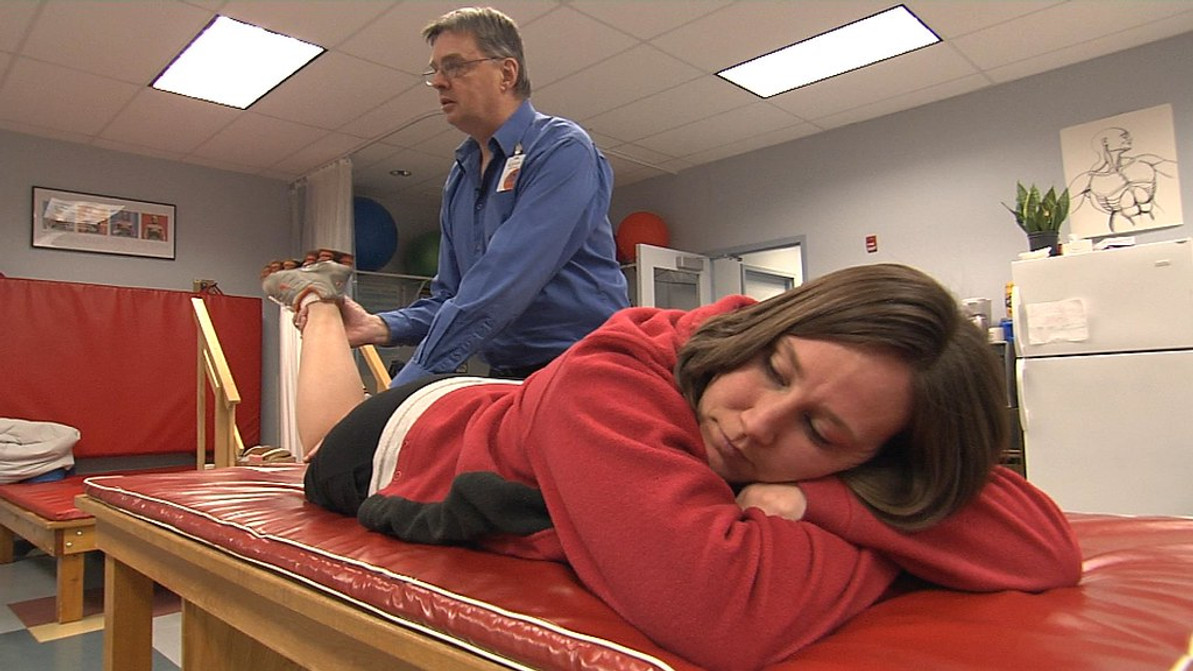Physical Therapy
If your doctor says to you that you need physical therapy then you have most likely had and injury or illness that makes it hard to do day-to-day tasks.
The purpose of physical therapy is to improve an individual's ability to function, move, and live better. To do this you may need to do the following:
- Improve movement.
- Relieve pain.
- Prevent or recover from sports injuries.
- Rehab after a stroke, accident, injury, or surgery.
- Work on balance to prevent a slip or a fall.
- Prevent disability.
- Prevent surgery.
- Manage a chronic illness like diabetes, heart disease, or arthritis.
- Control bowels or bladder.
- Recover after giving birth.
- Adapt to an artificial limb.
- Learn to use an assistive devices like a walker or cane.
- Get a splint of brace.
Physical therapy can benefit all age groups and it can treat a variety of health problems.
What is a Physical Therapist?
Physical Therapists (PTs) are movement experts who work to improve quality of life through prescribed exercise, hands-on-care, and patient education.
A PT provides care and treats anyone from newborns to people who are at the end of their lives. PTs also care for people who simply wan to become healthier and to prevent injuries.
All PTs are licensed health professionals who have specific graduate level trying in physical therapy. To be eligible to take the national exam to become licensed a prospective PT needs to graduate from a accredited higher educational institution with a Doctor of Physical Therapy (DPT) degree. An additional state exam (where a PT will be working) must also be passed to earn a license.
If you have sustained a serious injury, a PT won't take the place of other doctors, but a PT will work with your doctor and other health care professionals who are involved with your treatment.
What Does a Physical Therapist Do?
When you first meet with your physical therapist, he or she will ask questions about:
- Your pain level.
- Other symptoms.
- Your ability to move and to do daily tasks.
- How well you sleep.
- Your medical history.
The purpose of these questions to give a diagnosis of your condition, why you have the condition, including impairments that either caused or are a result of the condition. Also to aid in the diagnosis a PT will administer tests, such as:
- How well you can move around, reach, bend, or grasp.
- How well you walk or climb steps.
- Your heartbeat or rhythm while active.
- Your posture and balance.
After they have asked you questions and performed test, PTs will then create a treatment plan that will include your personal goals such as to feel better, to function more effectively, and to exercise.
Depending on your needs your treatment may include the following:
- Exercise or stretches guided by the therapist.
- Massage, heat, or cold therapy, warm water therapy, or ultrasound to ease muscle pain or spasms.
- Rehab to help you learn to us an artificial limb.
- Practice with gadgets that help you move or stay balanced, like a can or walker.
Your PT will watach you close to evaluate you and to adjust your treatment plan if needed.
Most likely your treatment plan will include exercises you can do at home between physical therapy sessions. Doing this help you to stay on track and to improve your fitness.
Where Do you Go to Get Physical Therapy?
There are a number of places a person can go to get physical therapy, such as at:
- Hospital.
- Outpatient clinics.
- Sports medicine centers.
- Private medical offices.
- Nursing homes.
- Assisted living homes.
- Rehab centers.
- Offices and work sites.
- Schools and colleges.
Related:
Recent Posts
-
Acupuncture vs. Dry Needling: What’s the Difference?
At first glance, acupuncture and dry needling might seem identical. Both involve inserting thin need …Jun 11th 2025 -
What Is Dry Needling? A Modern Approach to Pain Relief and Muscle Recovery
Chronic muscle pain, tension, and restricted movement can significantly impact your daily life, sign …Jun 11th 2025 -
The Kinetic Chain and Its Importance?
The kinetic chain is a key principle in physical therapy, referring to the way muscles, joints, and …Apr 18th 2025




